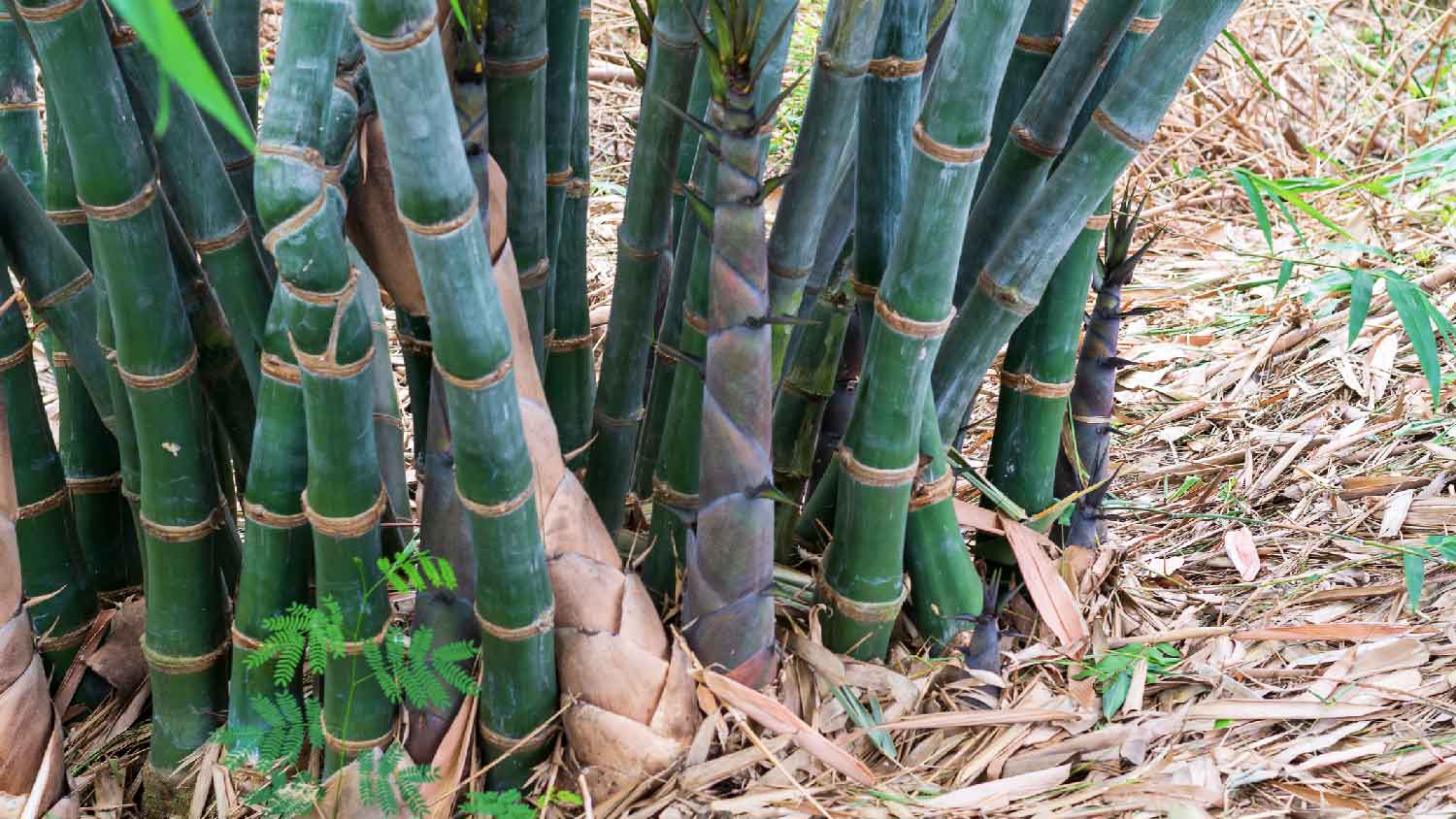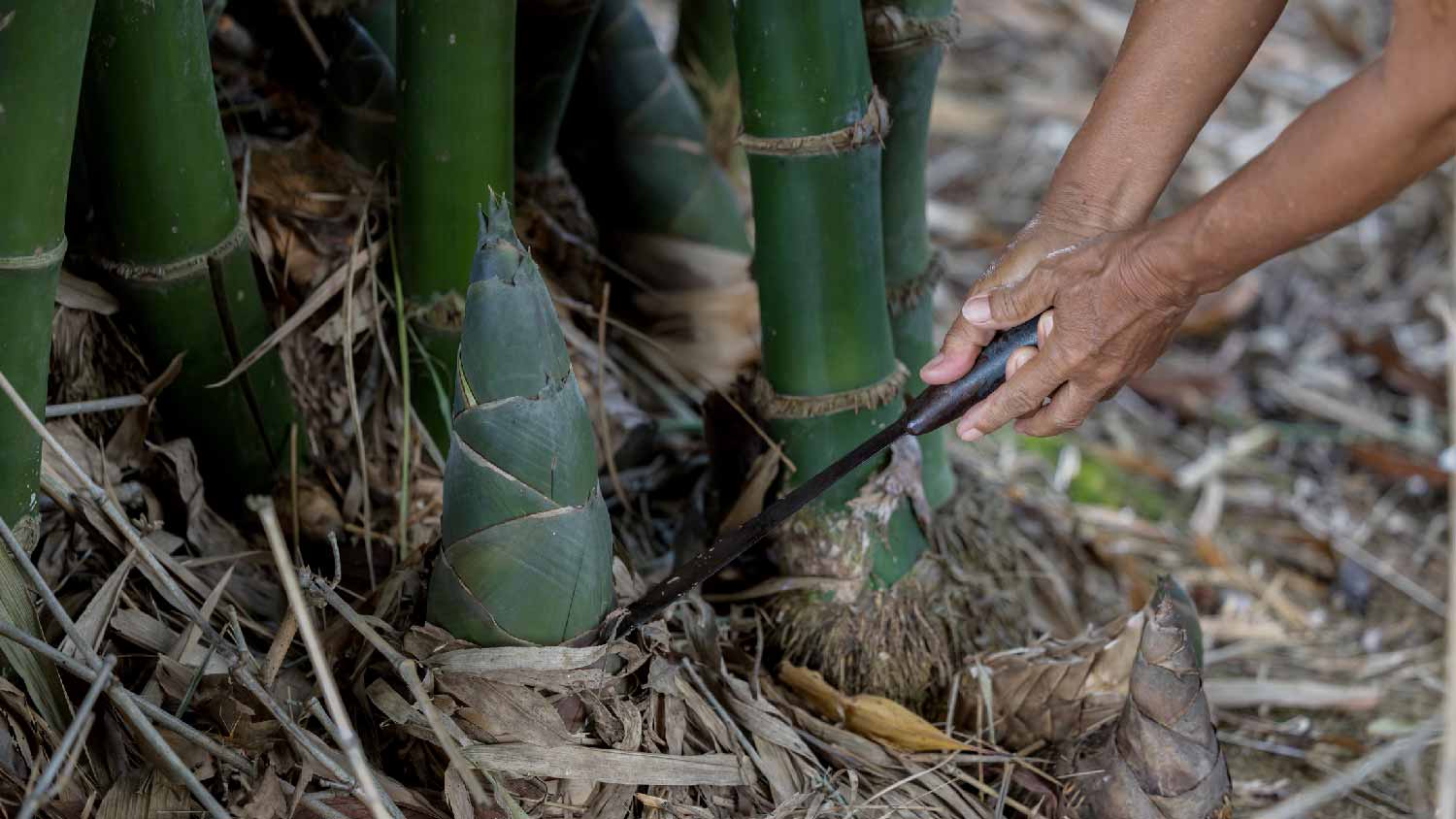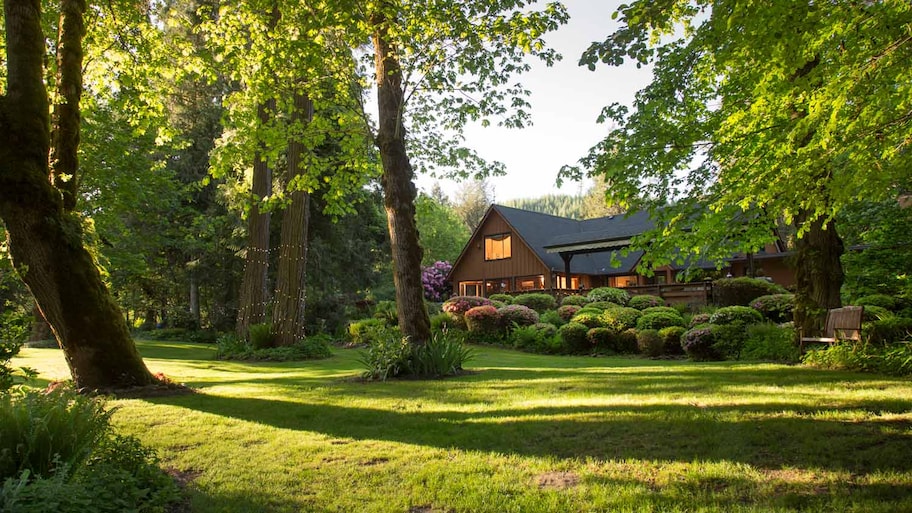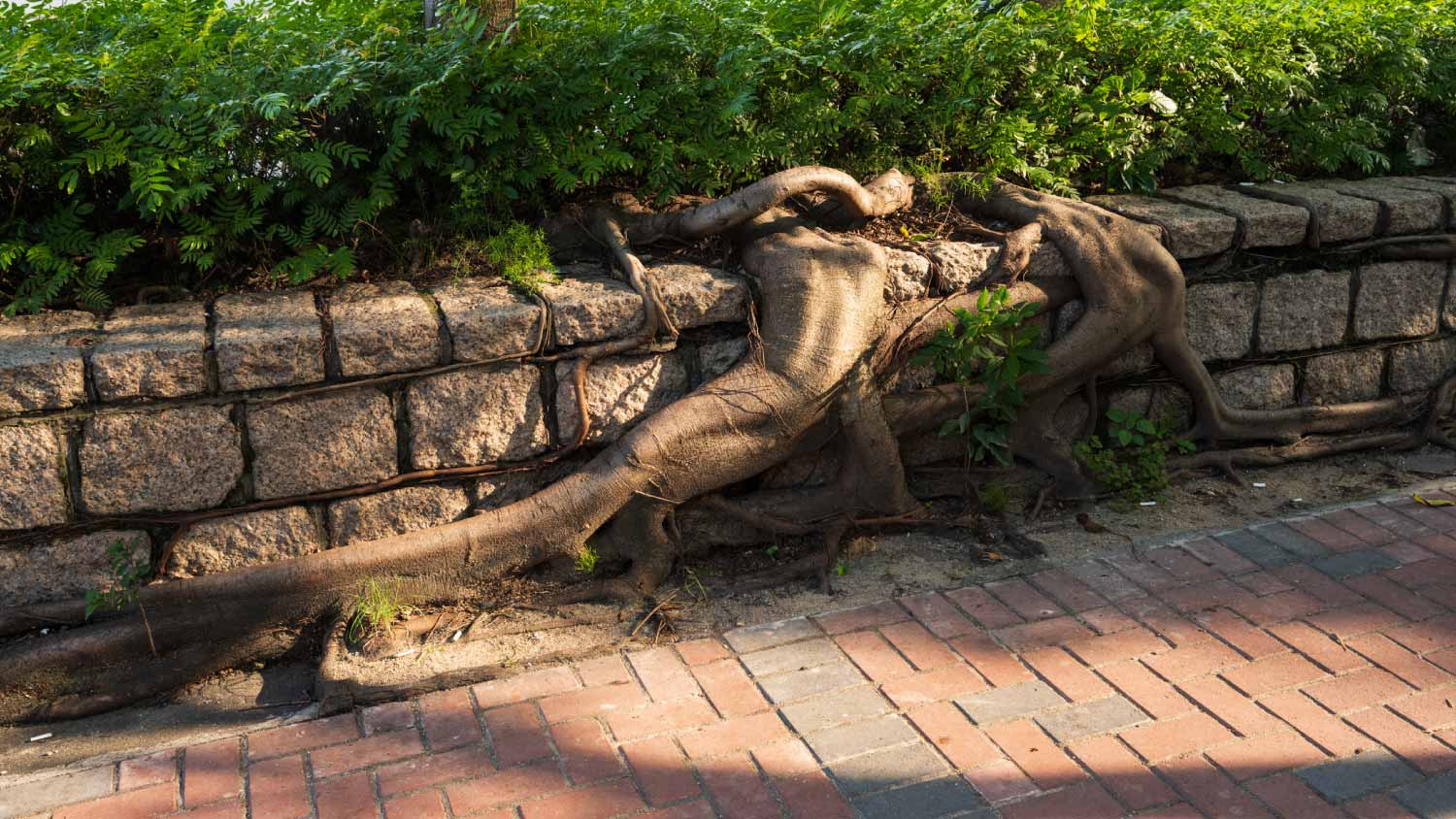How to Kill Bamboo Roots: A Complete Guide
Get to the root of this notorious growth problem


While bamboo appears beautiful and pest-free, the giant grass has a dark secret. Many versions of bamboo are invasive varieties with roots that spread at high speeds. Learning how to kill bamboo roots is key to preventing a widespread invasion.
You can dig spreading bamboo roots out or discourage the bamboo from growing, but bamboo can be very resilient. Our guide will walk you through the best ways to kill bamboo roots.
Why Are Spreading Bamboo Roots a Problem?

Many kinds of bamboo plants grow into big problems if they’re left alone for too long. They’re infamous growth rate leads to several issues every property owner should know about if there’s a patch nearby (including on your neighbor’s property).
Bamboo spreads easily where you don’t want it: With its speedy spread rate, bamboo spreads in the worst possible places. It won’t just invade nearby flowerbeds or disturb smooth lawns. It can also damage patios or walkways, disturb landscaping, and invade your neighbor’s yard.
Bamboo grows very fast: Bamboo is a grass and grows far faster than any tree. That’s another reason tackling bamboo roots is important to completely stop the plant, otherwise it can spring back to life very quickly.
Bamboo is an invasive species: Not all types of bamboo are invasive but many are, especially running bamboo varieties that spread easily. That means it can crowd out valuable native plants and the wildlife that depends on them. If you want to remove invasive bamboo, you have to catch every root or it could swiftly return.
It’s difficult to spot all runners in overgrown bamboo: The longer a bamboo problem is left alone, the worse it gets. That’s why it’s necessary to take care of a bamboo problem as soon as you recognize it.
Prepping to Kill Bamboo Roots
When you’re ready to begin, we suggest getting a shovel, bucket, and shears for this project. Most methods require digging down into the soil, so prepare to get a little dirty as you remove the roots. If you have a lot of bamboo, a wheelbarrow may also be helpful.
Dig Out and Expose the Roots
First, you must dig out the runner roots. If the bamboo has already sent up shoots, then you know exactly where to start digging. However, there could be many other rhizomes hidden underground around the bamboo, so it’s important to do an exploratory dig a few feet around the bamboo growth in all directions to see how far the roots have spread.
Bamboo runners grow close to the surface, no more than 6 to 12 inches under the ground, so they should be relatively easy to find. Once you’ve mapped out how the bamboo is spreading, uncover the roots.
How to Kill Your Bamboo Roots

Review these options for killing bamboo roots to choose the best method for you.
Manually Cut Away the Roots
The simplest option is to use gardening shears or a trowel to cut away the invasive roots and throw them in the trash. You don’t need any extra supplies, and it’s a quick project after the roots have been uncovered.
The problem with manually removing the roots is, of course, they can grow back. You can help prevent this with additional projects like adding a barrier to the soil. This method is easiest for small, limited bamboo growth.
Use Boiling Water
Boiling water, when applied directly to the roots, will damage and kill bamboo roots, preventing it from spreading. It will soak through the soil and reach underground roots. Plus, it’s very environmentally friendly and avoids the use of pesticides. You will need several applications over a period of a few days for the best results.
However, applying boiling water to bamboo roots has its problems. You may need to boil a lot of water to soak all the bamboo roots, which will take time. As we mentioned, bamboo is very tough and the boiling water may not kill all the runners, even with multiple applications. It can be difficult to tell if it’s worked before you replace the soil, so you’ll have to accept some uncertainty with this method.
Appy a Powerful Herbicide
If you don’t mind some chemical warfare, one of the most effective methods of killing these roots is to use a high-powered herbicide. Look for herbicides made to take down hardy, resistant grasses. Specifically, search for herbicides that use an activated ingredient like imazapyr or glyposhate, which have a good effect on bamboo.
Apply the herbicide directly to the roots before covering them back up. You can even cut the roots up a bit to give the herbicide easier access. However, always read the instructions on herbicides and apply with care. These are strong chemical mixtures that can easily poison nearby plants or grass. It can also make it more difficult to grow anything in the ground, even after the bamboo roots have died, so use it cautiously.
Cover Bamboo With a Tarp or Plastic
This method helps prevent bamboo from growing back in a hurry. The goal is to cut down bamboo close to ground level and then cover existing bamboo with a heavy tarp or thick black plastic (like trash bags). The covering will suffocate the bamboo with heat, keep it from getting any sunlight, and quickly dry it out.
In theory, this option kills the bamboo or forces it to die out to the point it would send out any more roots, and those it has sent out will die away. That makes it a viable option if you’d rather avoid digging up a large portion of your yard, but it will kill any covered grass or other plants, too.
How to Prevent Bamboo Root Problems
If you’re worried about bamboo getting out of control, these options will help keep it contained and remove the need for root work.
Repeat removal methods annually: Keep an eye on bamboo growth after its removal and repeat the steps annually if necessary.
Replace the bamboo entirely: One of the simplest options is to remove bamboo entirely so you don’t have to worry about it again. That requires catching root runners and destroying them, then digging up every trace of the bamboo problem.
Keep bamboo in pots: If you like fast-growing bamboo, the best option is to keep it in a pot or other container. It will try to spread (which is why we don’t suggest relying on wooden containers) but won’t be able to causse any damage. You can even bury the pot in the ground if you prefer a more natural look.
Plant a root barrier around bamboo: When handling existing bamboo, you can dig in a durable root barrier to surround the roots and wall off potential danger zones. Thick, high-quality plastic root barriers take work to install, but they offer years of protection against encroaching roots.
Regularly mow down bamboo: If you have a powerful mower, you can try mowing the bamboo down to nubs regularly. When bamboo is constantly cut close to the earth, it can’t get enough light and tends to wither away and die over time.
DIY vs. Hiring a Pro
Dealing with bamboo roots takes time and effort, but most homeowners can handle it. You can handle root problems with basic home supplies or a quick trip to a home improvement store. Killing bamboo roots yourself saves on labor costs, but it will take additional sweat equity.
If the bamboo problem is too massive and you aren’t sure where all the roots are hiding, you can hire a local root expert to handle the removal. Landscapers and other root removal pros charge from $450 to $1,300 for the bamboo removal, depending on the amount and type of bamboo.
Frequently Asked Questions
Most bamboo can send roots down two to three feet into the ground. However, when stopping bamboo from spreading, the focus is on the runner roots or rhizomes. These roots are much shallower, staying 12 inches or less from the surface, so they’re easier to find and remove. But if you want to remove the bamboo entirely, you’ll have to dig out the full root system.
No, vinegar cannot kill bamboo. Common household chemicals like vinegar and even bleach are unlikely to kill bamboo, and they may only have minimal effect on bamboo roots. Since they can alter the chemical composition of nearby soil, we suggest avoiding these methods. Bamboo is very tough and not even all herbicides work well against it. To beat back bamboo, find an herbicide that’s specifically designed to work against tough grasses.
Applying salt water will kill bamboo roots, but it will also kill everything else. Salting the ground will make your soil poisonous to any kind of plant life, and it can seep into surrounding lawns or flowerbeds, too. That’s why we don’t recommend this method for handling bamboo. You can try repeated applications of boiling water as an eco-friendly option to handle bamboo roots, but avoid salting it first.
Bamboo typically grows from the roots or the base of its stem. If you chop off the top of a bamboo stalk, it will produce more leaves to compensate but won’t grow directly from the top. Instead, it will continue growing from the base. You can see the same phenomenon at work every time you mow your lawn and grass grows back. Bamboo is just a much larger scale.





- How to Plant Bamboo: Care, Cost, and Containment Tips
- Pros and Cons Bamboo Flooring in Your Home
- Can Bamboo Flooring Be Refinished? What You Need to Know
- Bamboo Flooring vs. Laminate: Which Is Best for You?
- Bamboo Flooring vs. Hardwood Flooring: Which One Is Right for Your Living Space?
- A Homeowner’s Essential Guide to 5 Types of Bamboo Flooring
- How to Stop Tree Roots from Growing Back for Good
- How to Handle Tree Roots In Your Lawn
- What to Do With Tree Roots Above Ground: 15 Tips for Protruding Tree Roots
- Grass 101: How Deep Do Grass Roots Grow?










